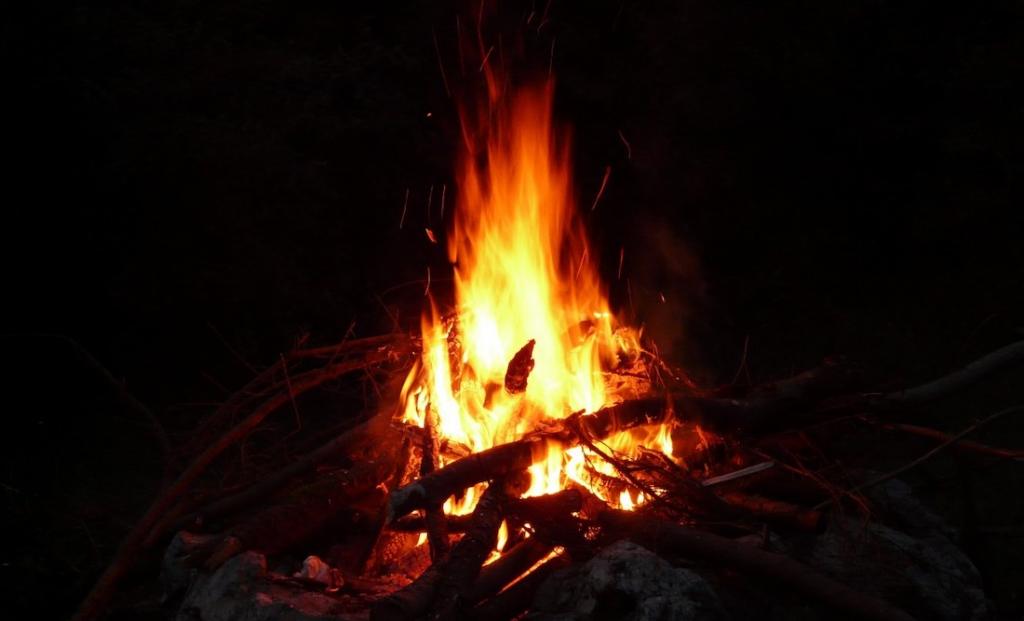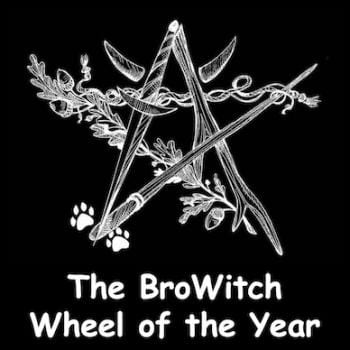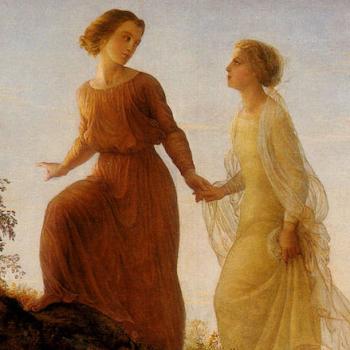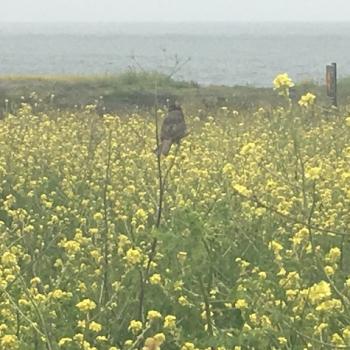For me this Beltane has special resonance: it’s a re-start to coven activities. With the exception of a socially distanced Samhain ritual and a few online events our coven has mostly been dormant. Beltane will still require some distance, and there will be masks here and there, but there will also be hugs among the vaccinated and the promise of more to come.

This Beltane won’t be Witchcraft as usual, and has me re-examining ritual the tropes we attach to the sabbats. Whether it’s bits of modern mythology, or folk practices that aren’t nearly as old as we think they are, every sabbat is full of ideas and activities that weren’t there at the beginning. This is especially noticeable in the age of coronavirus which severely limits what can and can’t be done for a sabbat.
I’ve joked with my coven several times over the last month that we’ll be having a “socially distanced maypole dance” this Beltane. The joke has been met by a few coveners with concerns that I’d go through with something that ridiculous (though most know better). Part of that is because “maypole=Beltane” is such a well-weathered trope in our community, and among some Witches and Pagans nearly an expectation.
I have always liked maypole dances, but because my coven generally meets indoors (there’s not much privacy outdoors here) we’ve gone without a maypole for years. For me it’s more a symbol of early Spring than a device we use for anything. And when we do get to dance ’round the maypole it’s almost always at a large public ritual.

Because of the difficulty inherent in setting up a maypole, skipping that particular trope doesn’t usually end in cries of “blasphemy!” but skipping other tropes sometimes does. Over the last few years as I’ve been re-evaluating how I celebrate the sabbats and that has meant changing and getting rid of a whole lot of things, especially at Beltane. Writing about those subtractions has resulted in accusations that I’m ruining Beltane or suddenly dislike sex.
Celebrating Beltane without an explicit focus on flirtations, sexuality, Maiden/Mother/Crone, and/or procreation has in many ways made my Beltane MORE meaningful. It’s hard to remember, but long before we decided that the maypole was a phallus and that Beltane was only for lovers, the holiday was something else entirely. The Irish-Celts who first celebrated Beltane viewed the day not as a celebration of the erotic arts, but as a fire festival.
The first written reference to Beltane dates from the year 900 CE and can be found in the Sanus Chormaic, an Irish glossary thought to have been written by a churchman of the time. The Sanus Chormaic is probably most notable for what it doesn’t include than what it does:
Belltaine ‘May-day’ i.e. bil-tene i.e. lucky fire, i.e. two fires which Druids used to make with great incantations, and they used to bring the cattle [as a safeguard] against the disease of each year to those fires [in marg.] they used to drive the cattle between them.
No maypoles, no Triple Goddesses, no love-making, just FIRE. From what we can glean from ancient texts the original Beltane was about keeping cattle safe from disease and malicious fairies using fire. That’s pretty much it. Everything else that shows up in modern celebrations of the holiday was taken from English May Day celebrations or 19th and 20th Century ideas about the holiday.
I for one can’t think of a better trope for Beltane this year than fire. Not only will I be jumping over a Beltane flame or two as a safeguard against the rest of 2021, I’ll be putting much of my 2020 into that fire. Fire is a cleansing and destructive, if there’s one thing I need a cleanse from it’s the isolation and sadness that has plagued much of my last 14 months. I also look forward to throwing a facemask in the flames as we gradually get back to something approaching our old normal.

The Celts of Ireland celebrated Beltane with fire because it represented what was most important to them at that period of the year. Keeping the cattle (and later crops) safe from disease, blight, and baneful magick was a priority. Fail to do those things and people would starve. It’s as simple as that.
Over the last few years I’ve noticed numerous blog posts and books reference “reimagining the sabbats,” but the sabbats don’t need to be reimagined. In their simplest form, the sabbats simply represent WHERE WE ARE ON THE WHEEL OF THE YEAR AT A PARTICULAR TIME. All of the other tropes are add-ons you are free to either use or discard. And where you or I will be on the Wheel of the Year at any given time will certainly fluctuate. Beltane in Wisconsin is not the same as Beltane in Arizona.
I find that my sabbat celebrations are more meaningful when I scrape off the patina of modern practice and explore the rather limited original source material. Doing so reconnects with me distant ancestors and practices long-ago family members may have celebrated. It also reminds me to celebrate the sabbats in a way that reflects where I’m at on the Wheel, as the Irish-Celts did 2000 years ago.
For the original celebrants of Beltane, the May sun and the Beltane fires were a reminder to be vigilant, even though the days were warmer and the nights shorter. For me, this year’s Beltane fire is a reminder of where we’ve been over the last 14 months, and that there’s a better tomorrow waiting just over the horizon.

















